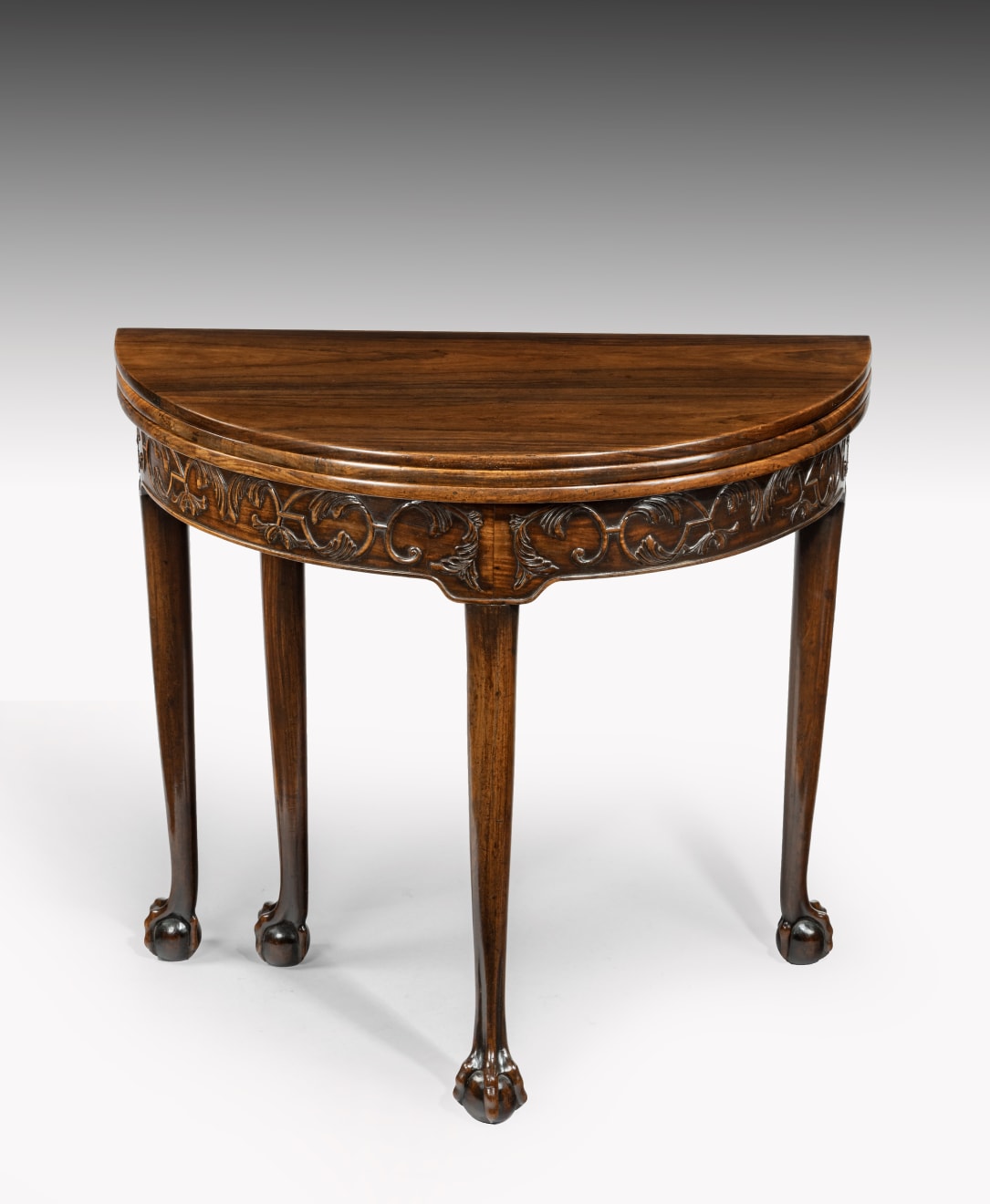Chinese Export 18th Century carved padouk demi-lune table
29 ¼ x 32 ½ x 16 in
Further images
Provenance
Private Collection, HampshireOf demi-lune form when closed, with two fold-over tops offering tea and gaming surfaces; the frieze and gaming surface carved with foliate scrolls, raised on four legs, one of them a gateleg to support the tops, terminating in ball and claw feet.
The rarity of this exceptional Chinese Export table cannot be overstated. There are only two other known demi-lune tables with tea and gaming surfaces of this form from this early period. Carl Crossman explains in ‘The Decorative Arts of the China Trade’: Very few 18th Century Chinese export hardwood tables, copied directly from an English, or Dutch prototype, are known… A superb demi-lune table with three folding tops serves as a side table, opens to a full round table with a solid wood top, and finally opens to a (now suede-lined) gaming top.
That table, from the Milhender Collection, has a plain frieze and tapering legs terminating in Chinese dragon mask feet. Crossman remarks ‘it is one of very few of this types of table known. It would seem that for the China trader the more practical pieces of furniture were case pieces such as bureaux, desks and bookcases which could be used for storage and general usefulness; a table perhaps was an unnecessary encumbrance….’ This table appears to be unique with its fluid and intricate low relief carved decoration around the frieze and the border of the gaming surface. It is reminiscent of the low relief carving found on a model of chair which Crossman exhibits on p. 231. While Crossman suggests that such low relief carving is probably an imitation of that seen on gilded and gessoed furniture in the Queen Anne and George I periods of English furniture design, it also somehow retains a distinctly oriental flavour.
It is fascinating to note that a similar table can also be found at Saltram House, Devon. While the example found at Saltram incorporates mother of pearl inlaid decoration in the frieze (and apparently around the border of the gaming surface) in place of the low relief decoration of the present table, the design of the decoration is uncannily similar suggesting the two tables may well have perhaps come from the same workshop in early 18th Century Canton.
This table really represents a significant addition to the lexicon of early 18th Century Chinese Export Furniture. The ambitious design is previously un-recorded while its decoration tantalizes the scholar with the possibility of a Chinese craftsman offering alternative forms of decoration at such an early period of the development of the trade.










